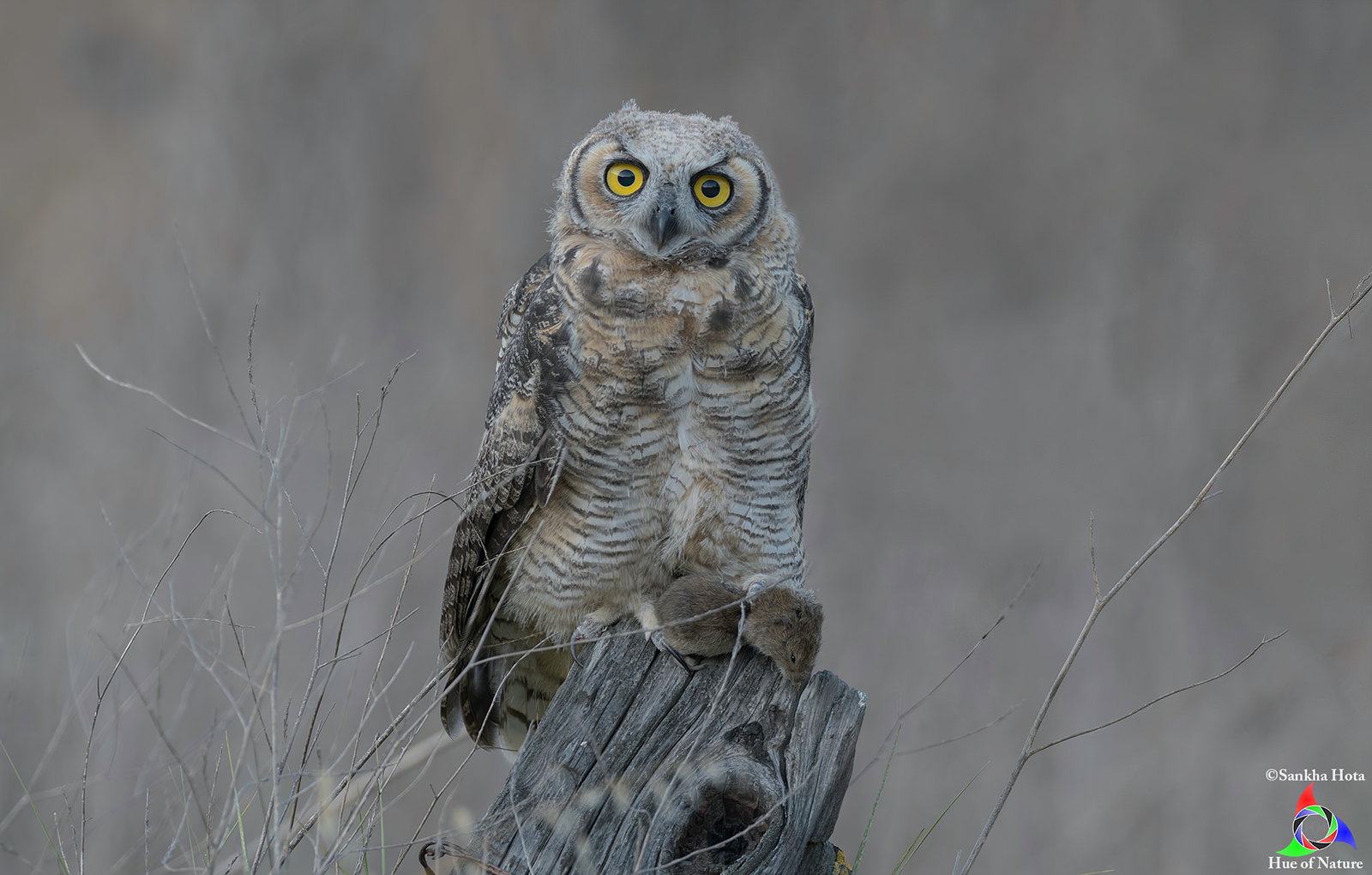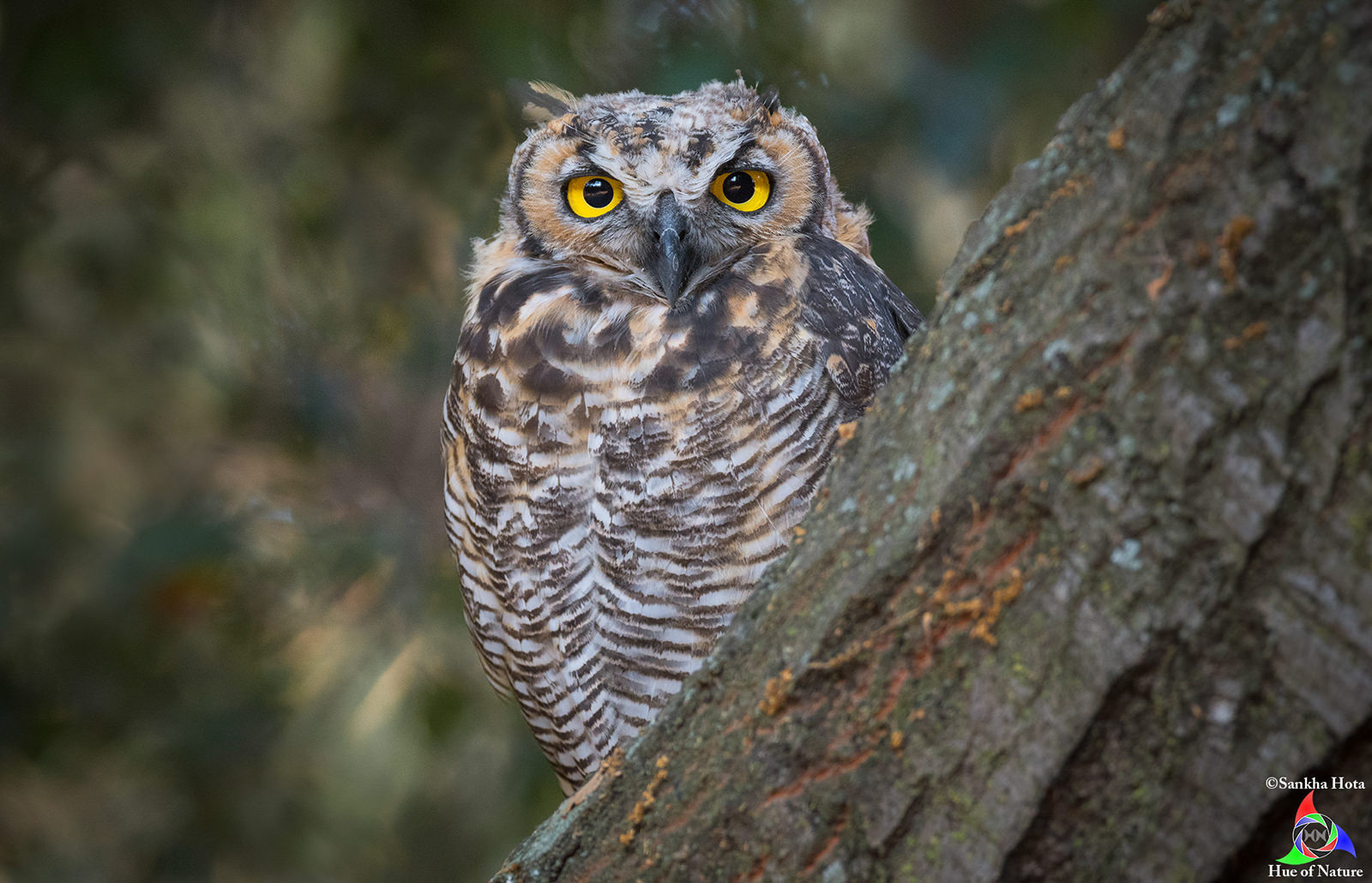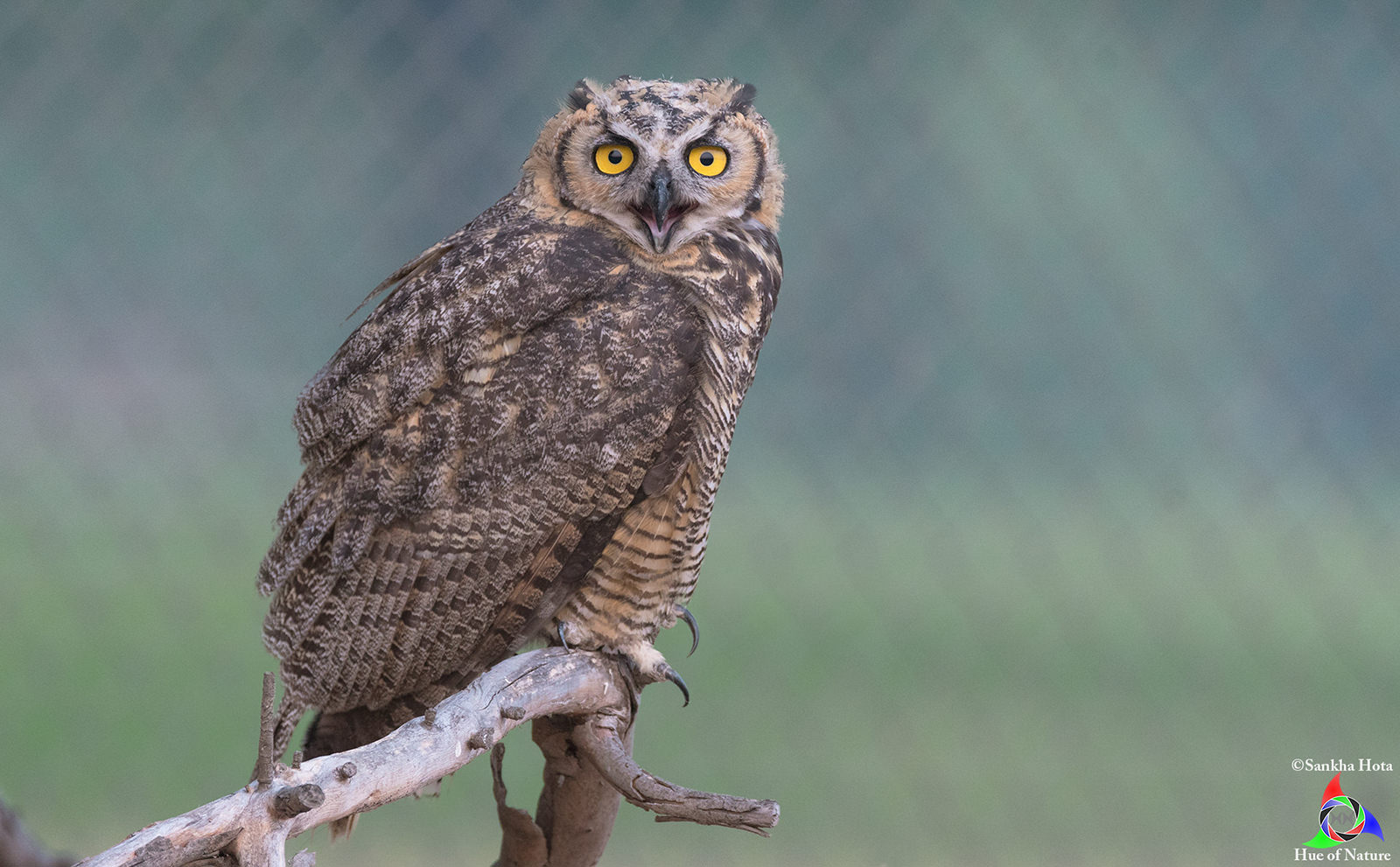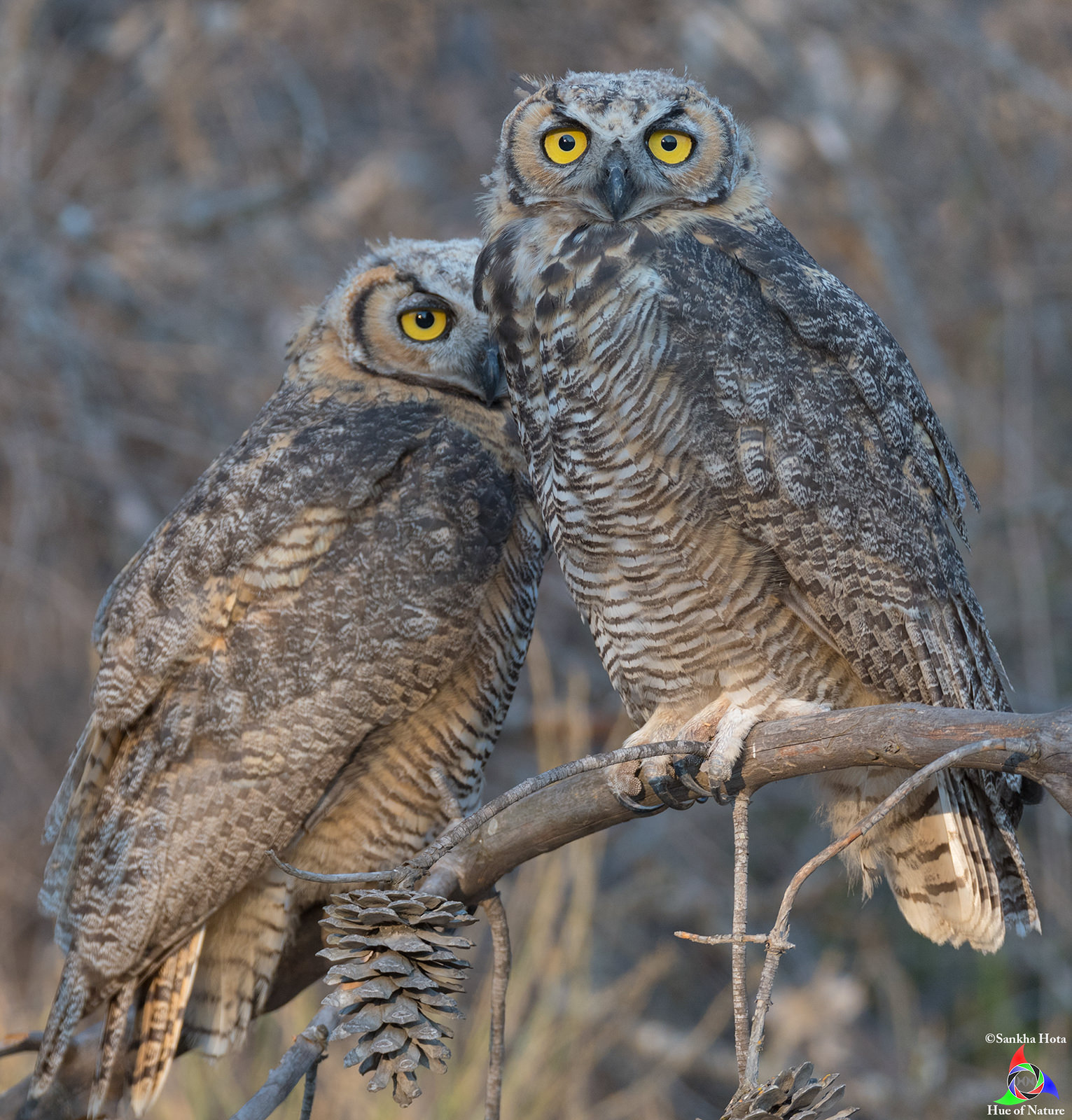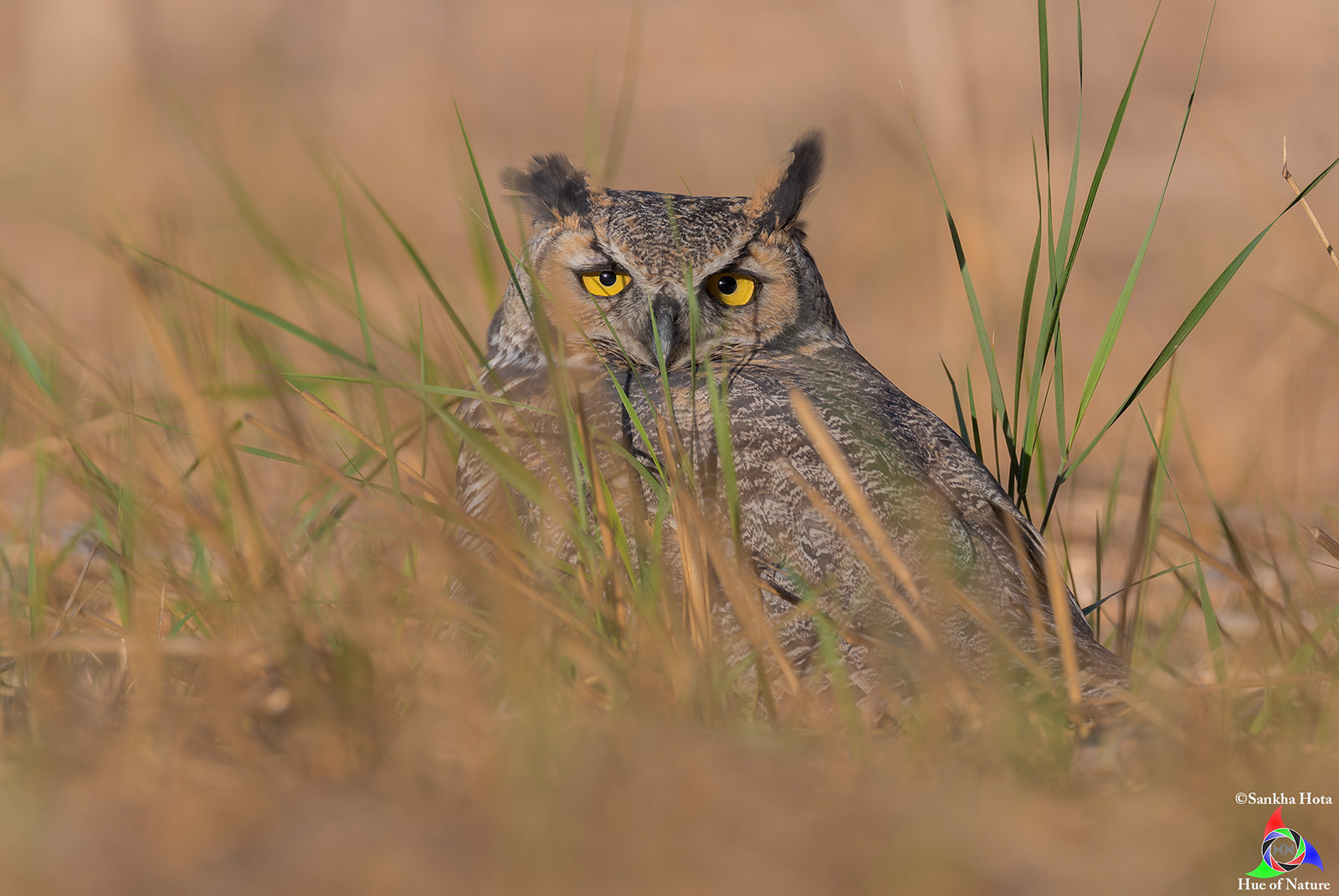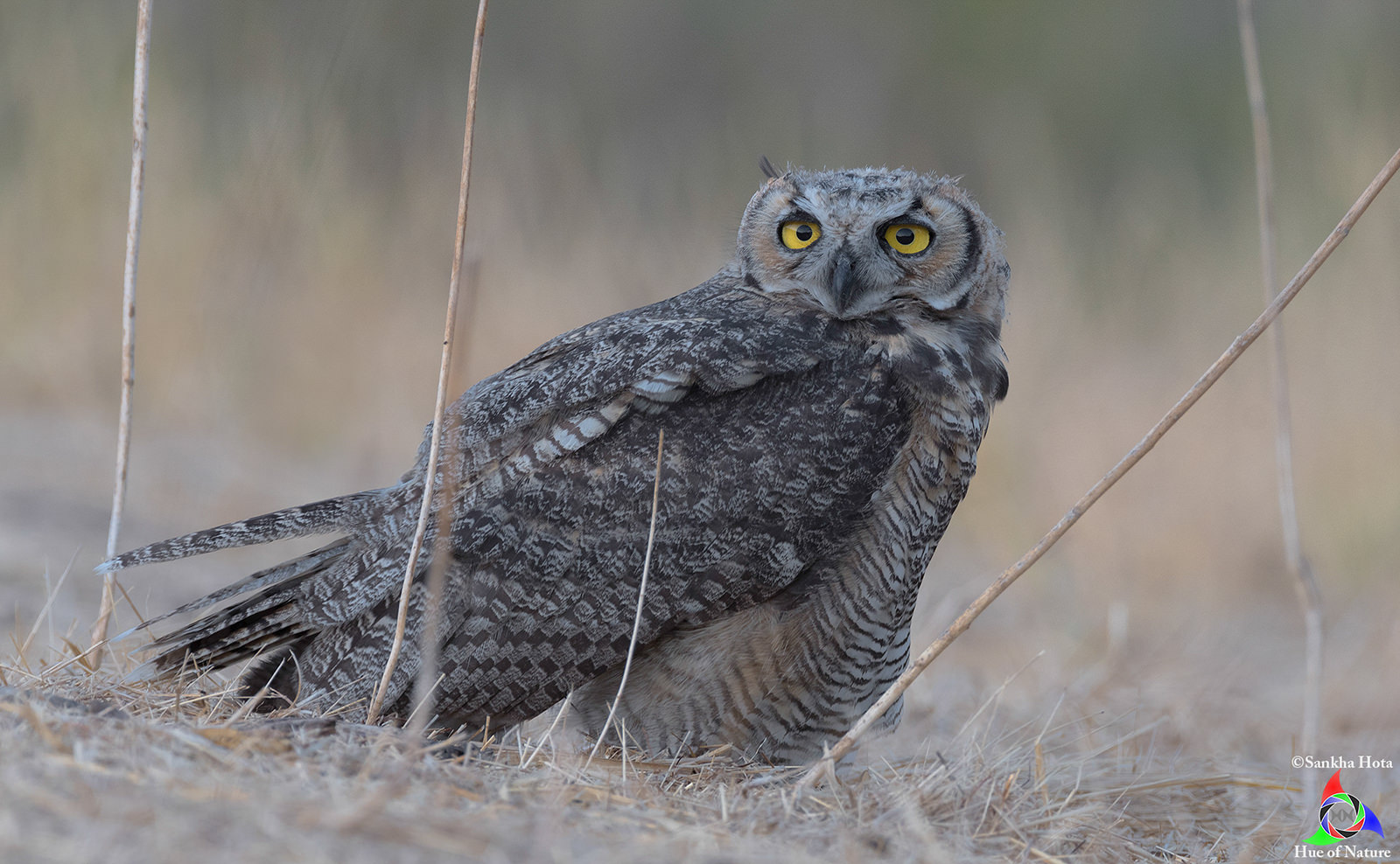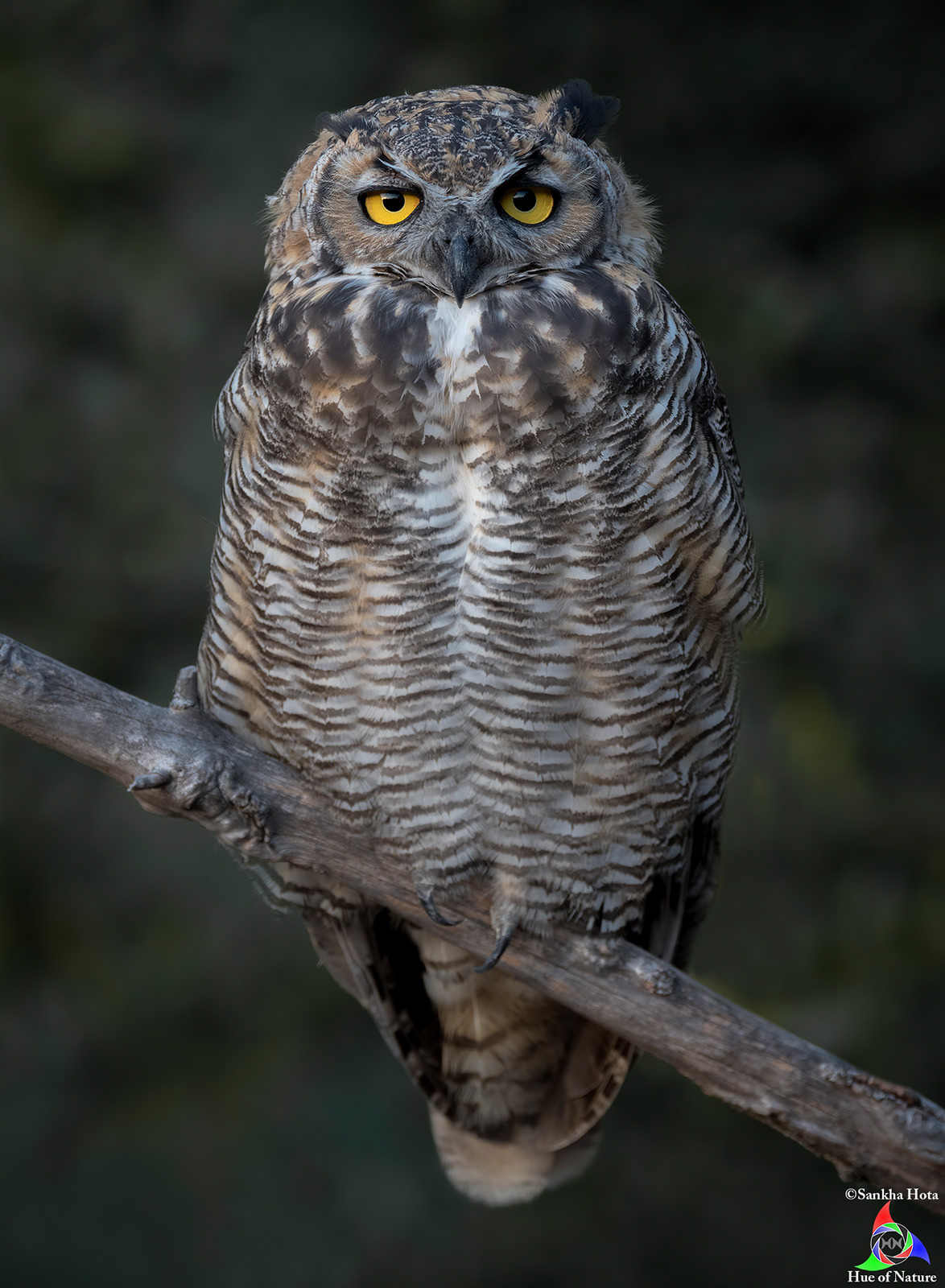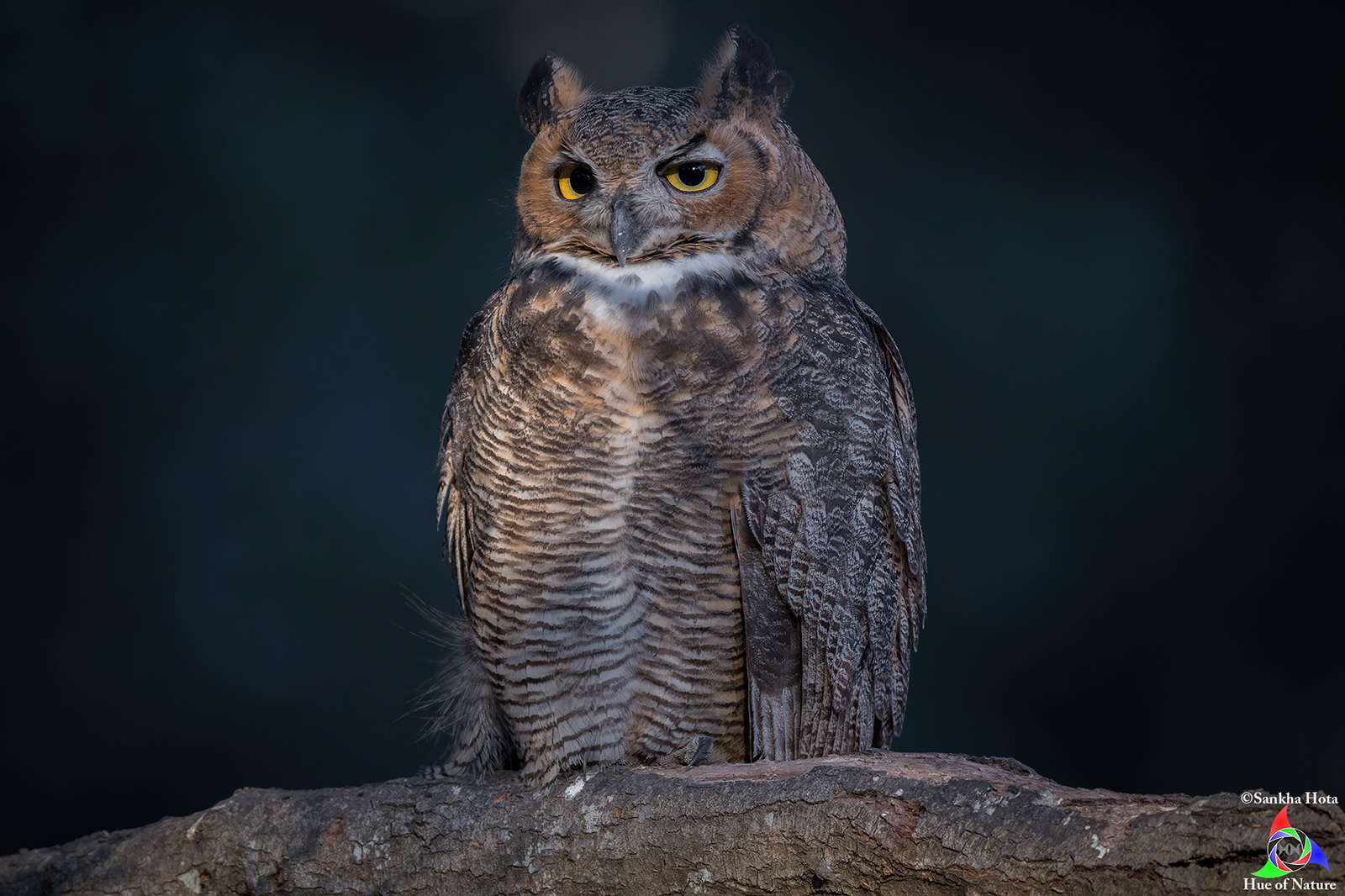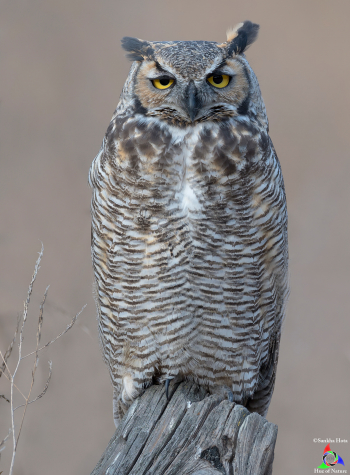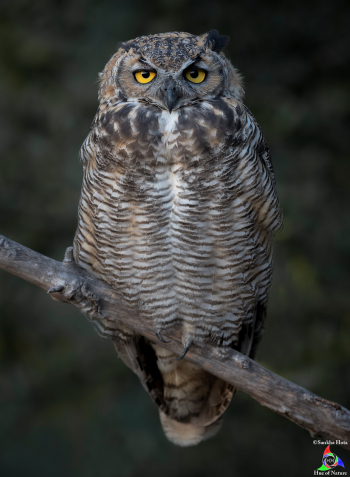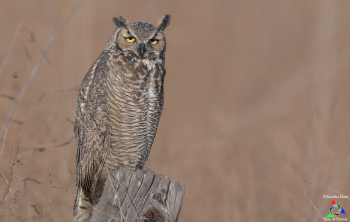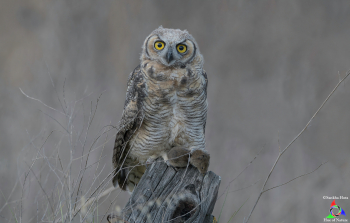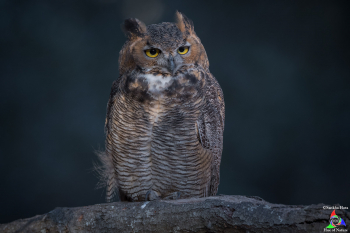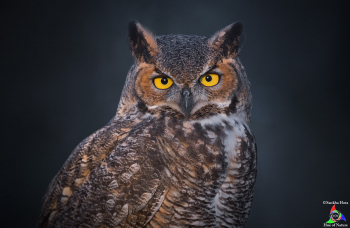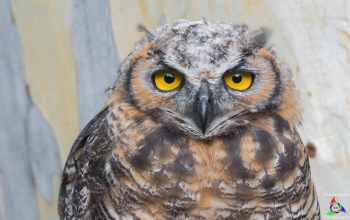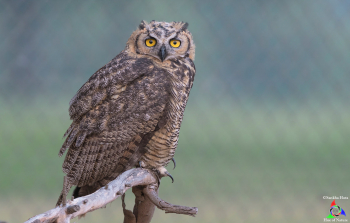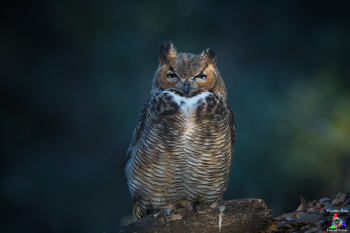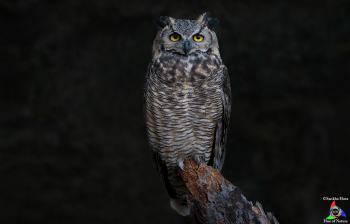The Story of Two Owlets
Decidedly, I went back again the next day, and to my utter surprise, found one owlet sitting on a perch clearly visible from the walkways. I approached it very carefully, taking my time: it was like two steps forward and two minutes of measuring each other. Finally, after 20 mins, I was able to close the gap substantially, so that I could separate the fenced background from the owlet to get a good shot. I wanted to spend the rest of the evening with the owlet, but fearing that other people might follow me, I left the place sooner. This was a very eventful day as I was able to approach an owl and photograph from such a close distance. This was also the day when these wonderful bright yellow eyes mesmerized me for the first time, and left a lasting impression that will never fade away!
Dinner time (Great Horned Owl family)

